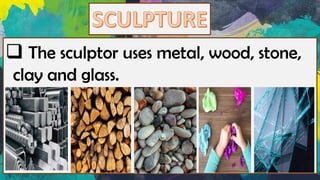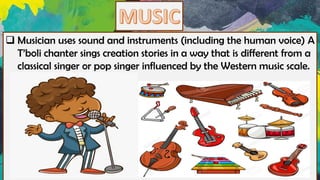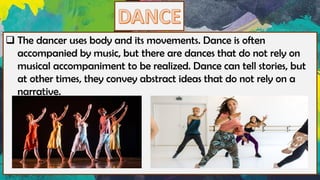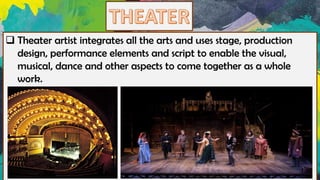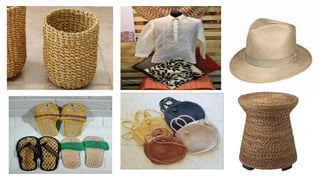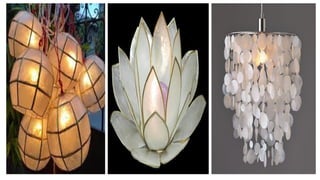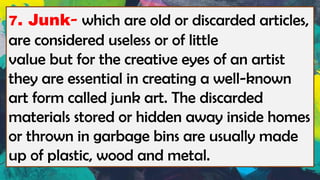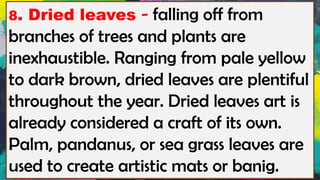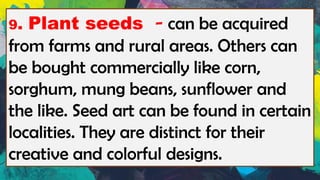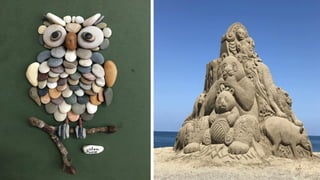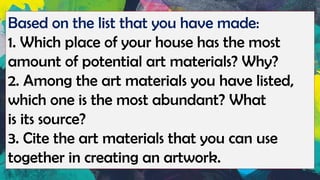The document discusses different types of art materials used by various artists. It describes the materials used by sculptors, architects, painters, printmakers, musicians, dancers, theater artists, photographers, writers, designers and more. It then discusses indigenous, local and non-traditional art materials that are commonly found in the Philippines, including abaca, coconut shells, bamboo, capiz shells, rattan, small shells, plants, rocks, sand and more. Local materials can be traditional or non-traditional depending on their usual use. The document encourages identifying potential art materials at home and creating a mini artwork using local materials.






